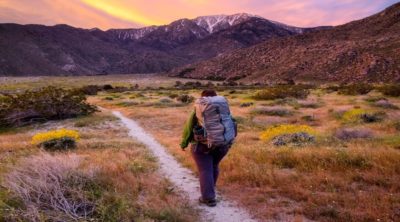
The Yosemite National Park is one of the most favored destinations for those who love fishing. The sanctuary is home to several species of fish in many clear streams, rivers, and lakes. This UStravelia article sheds light on some tips for fishing in Yosemite and provides important information that will make your trip an enjoyable and memorable one.
4 Million and Counting!
According to the National Park Service, in the year 2012, Yosemite National Park was flooded with 4 million visitors. This national park hit the 1 million mark in 1954, 2 million in 1967, 3 million in 1987, and touched 4 million in 1994.
The Yosemite National Park is one of the most fascinating tourist places of California. It is mostly famous for its magnificent granite cliffs that extend over a large area, natural streams, waterfalls, and biological diversity. The park was declared as a world heritage site in 1984. On an average, more than 3.5 million tourists visit this place every year. In addition to various tourist attraction sites, there are several activities that one can enjoy, such as hiking, biking, camping, birdwatching, fishing, etc.
All streams and rivers are open for fishing from mid-April to mid-November. However, in Frog Creek which is situated near Lake Eleanor, the season starts from mid-June to protect the breeding rainbow trout. All lakes are open throughout the year.
Fish Species
The national park covers 58 streams, which accounts for more than 700 miles in length. One can find a large variety of native and non-native fish here.
Native Fish Species
- California roach
- Sacramento pikeminnow
- Hardhead catfish
- Sacramento suckers
- Rainbow trout
Non-native Fish Species
- Bullgill
- Smallmouth bass
- Brook trout
- Brown trout
- Lahontan cutthroat trout
- Golden Trout
- Rainbow trout (higher elevations)
- Rainbow-golden hybrid trout
- Rainbow-Lahontan cutthroat hybrid trout
Best Places for Fishing
- Moccasin Creek is a good spot for angling in May/June.
- The Tuolumne River below Hetch Hetchy offers very good fish in the late season. However, one must be careful here, as this place is home to many rattlesnakes.
- For superb trout fishing, one can visit highway 140 in Mariposa County from 4½ miles below Briceburg to Foresta bridge at El Portal.
- Lake McClure is a very good spot for trout, king salmon, and Florida largemouth bass.
- Lake McSwain is a popular place to catch salmon, trout, panfish, and bass. High country streams near highway 41 offer really good trout. Other good spots are Granite Creek near Bass Lake and the northeast fork on the San Joaquin River.
- After the snow has melted, Clark Fork and Kennedy Meadows on Stanislaus River are very good options.
- Other popular spots are Murphys Creek and Angels Creek.
- One usually has to wait till Memorial Day to access the high country lakes.
Best Tackle
- Most anglers prefer to use either fly rods or ultralight spinning setups.
- For large and deep pools, tackle like the standard gold Kastmaster (1⁄12 oz.) is a good choice.
- If you are looking to fish in shallow areas, tackles such as the Panther Martin Yellow with a bright spinner (1⁄16 oz.) are really good.
Fishing Camps
There are many places where you can find comfortable lodging during your trip.
- The Wawona Hotel in the Wawona area, the White Wolf Lodge in the Tioga Road area, and the Tuolumne Meadows Lodge are some good options one can choose from.
- You can also find other lodging options at Mariposa, Coulterville, Fish Camp, or Greeley Hill.
Transport
- One can use private vehicles to dive within the park to your favorite fishing spots. However, if you wish to enjoy the natural beauty, you can walk or cycle too.
- Also, check for free shuttle buses, which operate within the park.
Rules and Regulations
There are certain fishing regulations in the National Park, which are governed by the State of California. To know about them in detail, one must go to the park’s visitor centers. Some of the important ones are mentioned below.
- Any person above the age of 16 must have a valid California sport fishing license. The cost of the licenses range from about USD 6 to USD 800 depending on the type of license, whether or not the person is a resident of California and other factors. You can purchase the licenses online or at the Wawona Gift Shop, Tuolumne Meadows Store, or the Sport Shop in Yosemite Valley. One must always have the license in immediate possession while fishing.
- Most of the trails are areas designated to native trout. Hence, catch-and-release rules apply.
- Bait fishing is prohibited within the park. One may use artificial lures and flies with barbless hooks.
- The number of fish that can be caught or possessed is also fixed for a particular area. For example: in the main valley, the number of brown trout is five per day, whereas rainbow trout should be released immediately.
- It is prohibited to fish from bridges and docks within the park.
- The maximum size limit of the fish caught should not be more than 12 inches.
Other Tips for Fishing
- You can explore the park either through guided tours or on your own. If you are heading out on your own, you can consult with the local guides about the regulations of the park.
- In case you don’t carry fishing gear, equipment, and supplies, they are available through rental systems.
- If possible, go for a lower elevation site so that you won’t get tired during the trip. Some of the easily accessible spots are Tuolumne river, Buena Vista lake, and Washburn lake. For a more adventurous experience, you can search for untouched waters like Conness Creek. While doing so, make sure that you carry a good GPS (Global Positioning System) in order to track your direction and location.
- Most fish found are planters ranging between 12 – 16 inches in length. An angler can catch many fish per day during the fishing season. Interestingly, the fish caught from higher elevations are comparatively smaller than those from low elevation waters.
These were some tips for fishing in the Yosemite National Park. For detailed information regarding the various activities, alerts, scheduled programs, regulations, etc., you can refer to the guidelines mentioned in the official website of the park. Best of luck and happy fishing!


